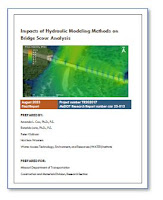In this study, the S&T research team conducted comprehensive data analysis from the Asphalt Mixture Performance Tester (AMPT) samples collected in the Highway 54 and MO 740 projects. The MO 740 project in Boone County contained test sections with five mix designs, i.e., control mix, ground tire rubber (GTR)-modified mixture, and three mixtures containing recycled plastic. The Highway 54 project had ten samples collected at different times during the production of the surface mix. The data were analyzed on both the material and structural scales, and for the MO 740 project, field performance was also used to verify the research findings. The fatigue performance index Sapp and the Rutting Strain Index (RSI) were calculated, and the mixture performance in pavement structures with realistic traffic loads and climate was predicted. The research found that the mixture performance in the Highway 54 project has a good correlation with the mixture volumetric properties. In terms of the different mix designs in the MO 740 project, the AMPT tests suggested that the GTR-modified mixture had the lowest modulus but had the highest cracking resistance. However, the mixture might have a higher rutting susceptibility than the other mixtures. On the other hand, the addition of plastic increased the mixture stiffness and did not have a great impact on the fatigue and rutting performance compared with the control mixture.
Report number: cmr 23-017
Published: December 2023
Published: December 2023
Project number: TR202417
Authors: Jenny Liu and Yizhuang David Wang
Authors: Jenny Liu and Yizhuang David Wang
Performing organization: Missouri University of Science & Technology
















